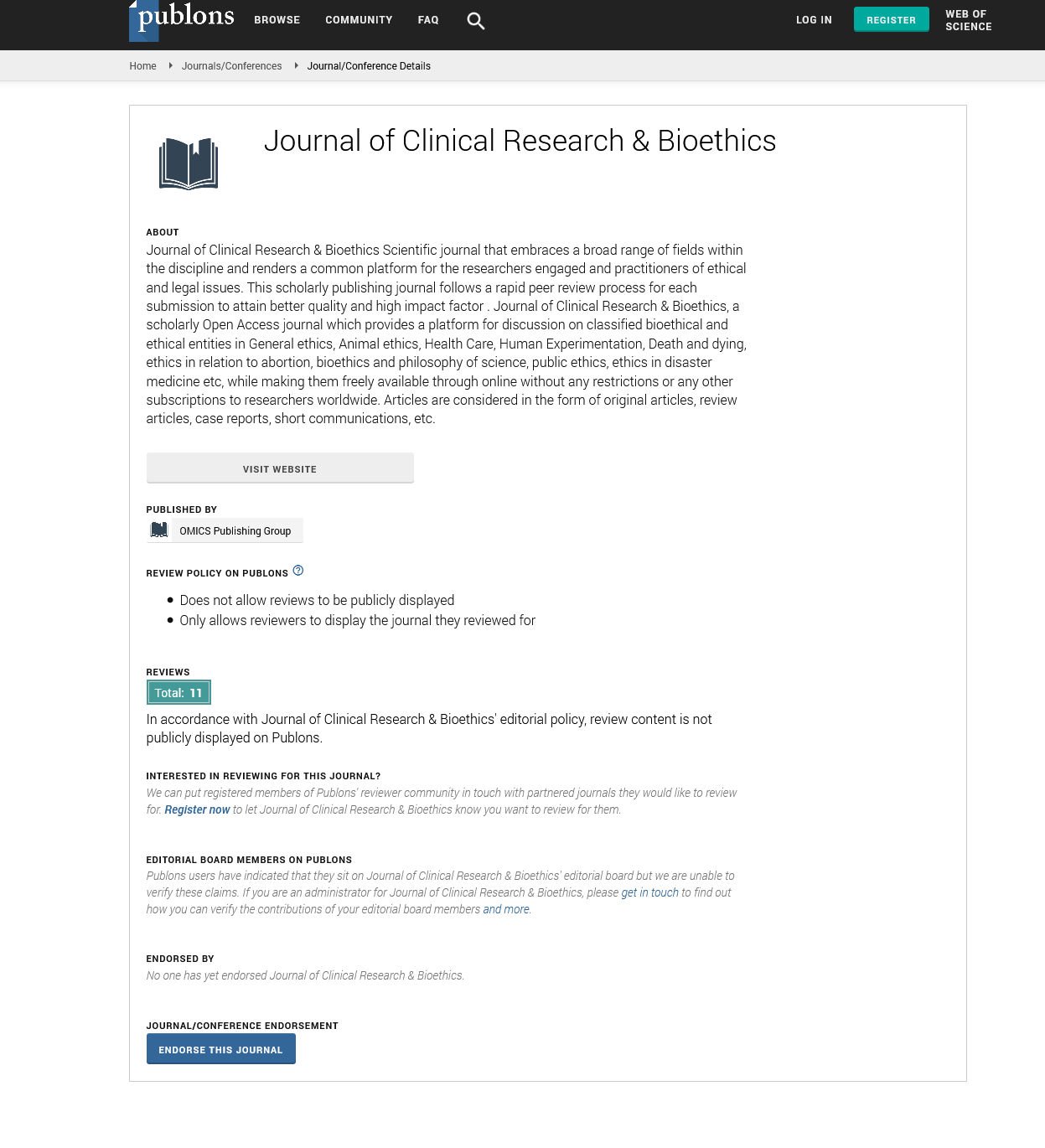Indexed In
- Open J Gate
- Genamics JournalSeek
- JournalTOCs
- RefSeek
- Hamdard University
- EBSCO A-Z
- OCLC- WorldCat
- Publons
- Geneva Foundation for Medical Education and Research
- Google Scholar
Useful Links
Share This Page
Journal Flyer

Open Access Journals
- Agri and Aquaculture
- Biochemistry
- Bioinformatics & Systems Biology
- Business & Management
- Chemistry
- Clinical Sciences
- Engineering
- Food & Nutrition
- General Science
- Genetics & Molecular Biology
- Immunology & Microbiology
- Medical Sciences
- Neuroscience & Psychology
- Nursing & Health Care
- Pharmaceutical Sciences
Need for patient registries for rare disease clinical trials and how to integrate them into the electronic medical record
3rd International Conference on Advanced Clinical Research and Clinical Trials
September 20-21, 2017 Dublin, Ireland
David A Pearce
Sanford Research, USA
Keynote: J Clin Res Bioeth
Abstract:
Rare diseases affect an estimated 350 million people worldwide, or 1 in 10 people, and approximately 7000 different rare diseases exist throughout the world today. These are striking numbers, especially considering that 90% of those affected with a rare disease are treated with off-label prescriptions, and less than 1% of rare diseases have an FDA approved drug. Families affected with rare diseases often have little support to turn for information about treatments, support or current research. Researchers and physicians studying rare diseases frequently lack the amount of patient information needed to further their research, in turn inhibiting development of new therapeutics for treatment of rare diseases. Clinical trials for rare diseases are challenging because the patient population is so small, and participants are difficult to find. In 2010, Sanford Research started the Coordination of Rare Diseases at Sanford or CoRDS to try and curb the lack of centralized, collated and available patient information. CoRDS serves as a national rare disease registry that connects rare disease patients with researchers, physicians, patient advocacy groups, other rare disease families and genetic counselors. The ability to have a database of rare disease patient information is key to accelerating research in rare diseases that affect only a few people worldwide.
Biography :
David A Pearce heads the leading lab in Juvenile Neuronal Ceroid Lipofuscinosis (Batten disease) research at Sanford Health. He has been researching Batten disease since 1997. His research has led to the first clinical trial for Juvenile Batten disease and has published over 100 research papers. He also oversees a national registry for rare diseases known as the Coordination of Rare Diseases at Sanford (CoRDS). He has organized rare disease workshops for the National Institute for Neurological Disorders and stroke arm of the National Institutes of Health and is currently a member of the executive committee for the International Rare Diseases Research Consortium (IRDiRC). In his role as President of Research at Sanford, he is responsible for overseeing the development of research programs across Sanford’s nine-state footprint, including more than 250 researchers, eight research centers and more than 300 ongoing clinical trials.

